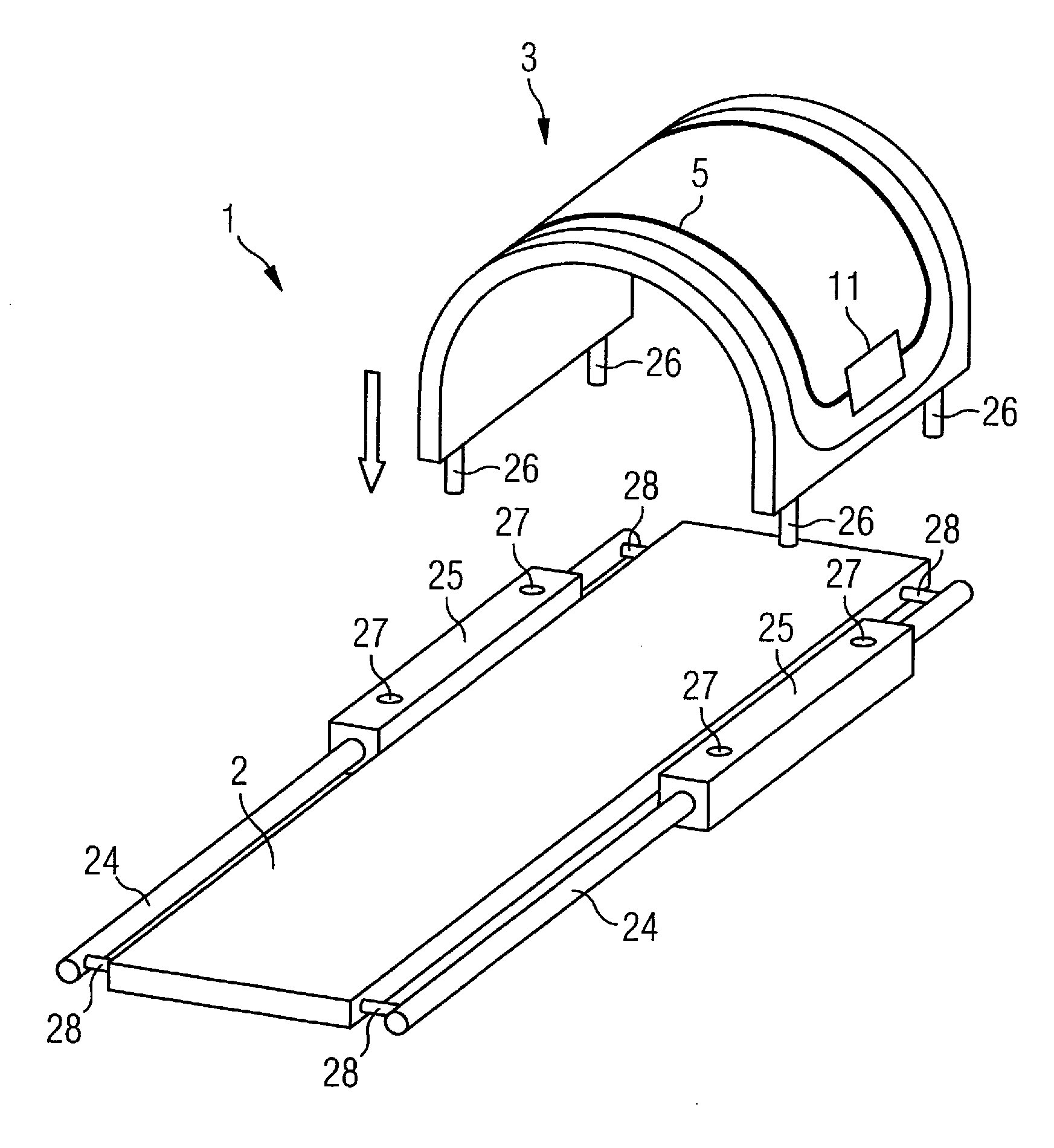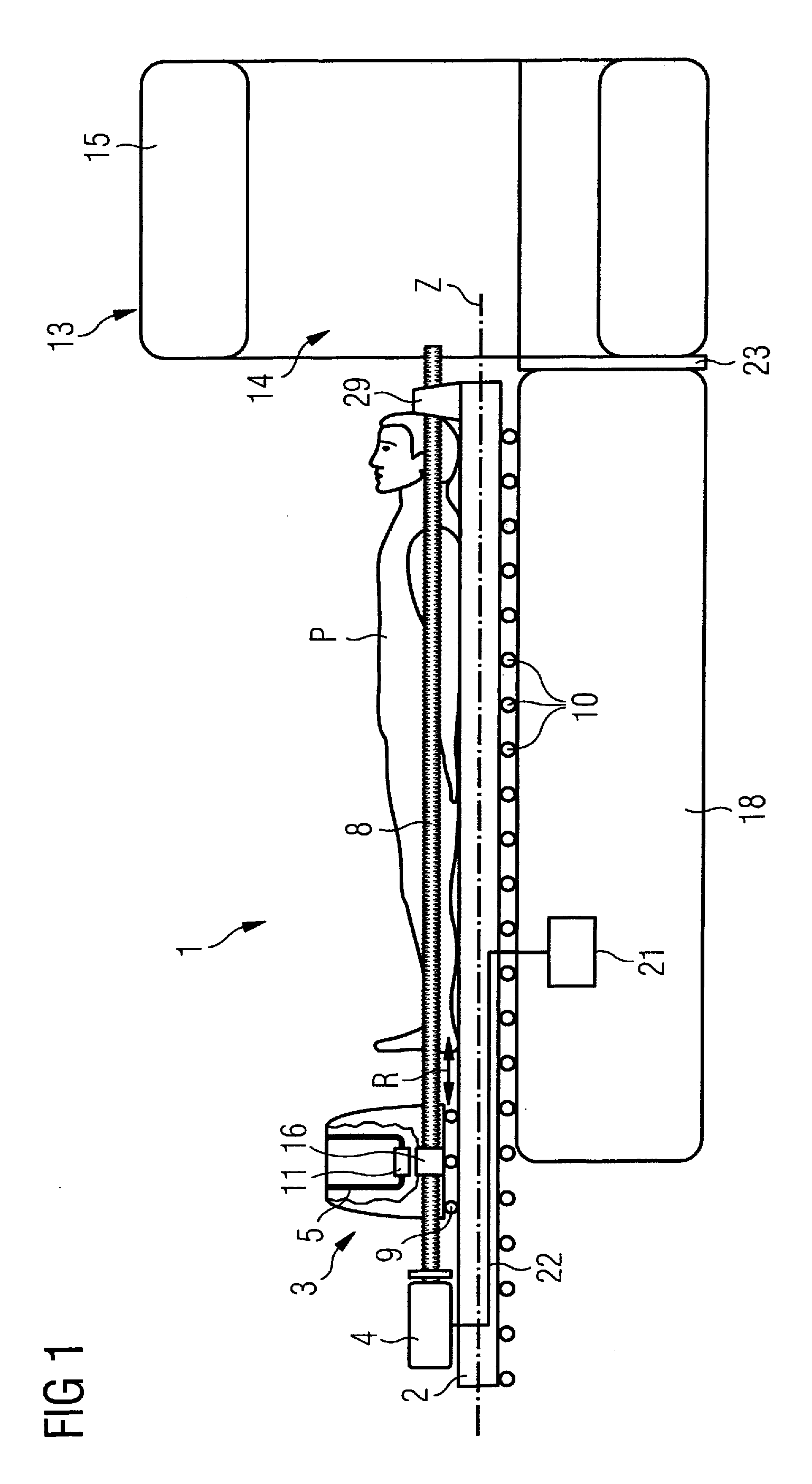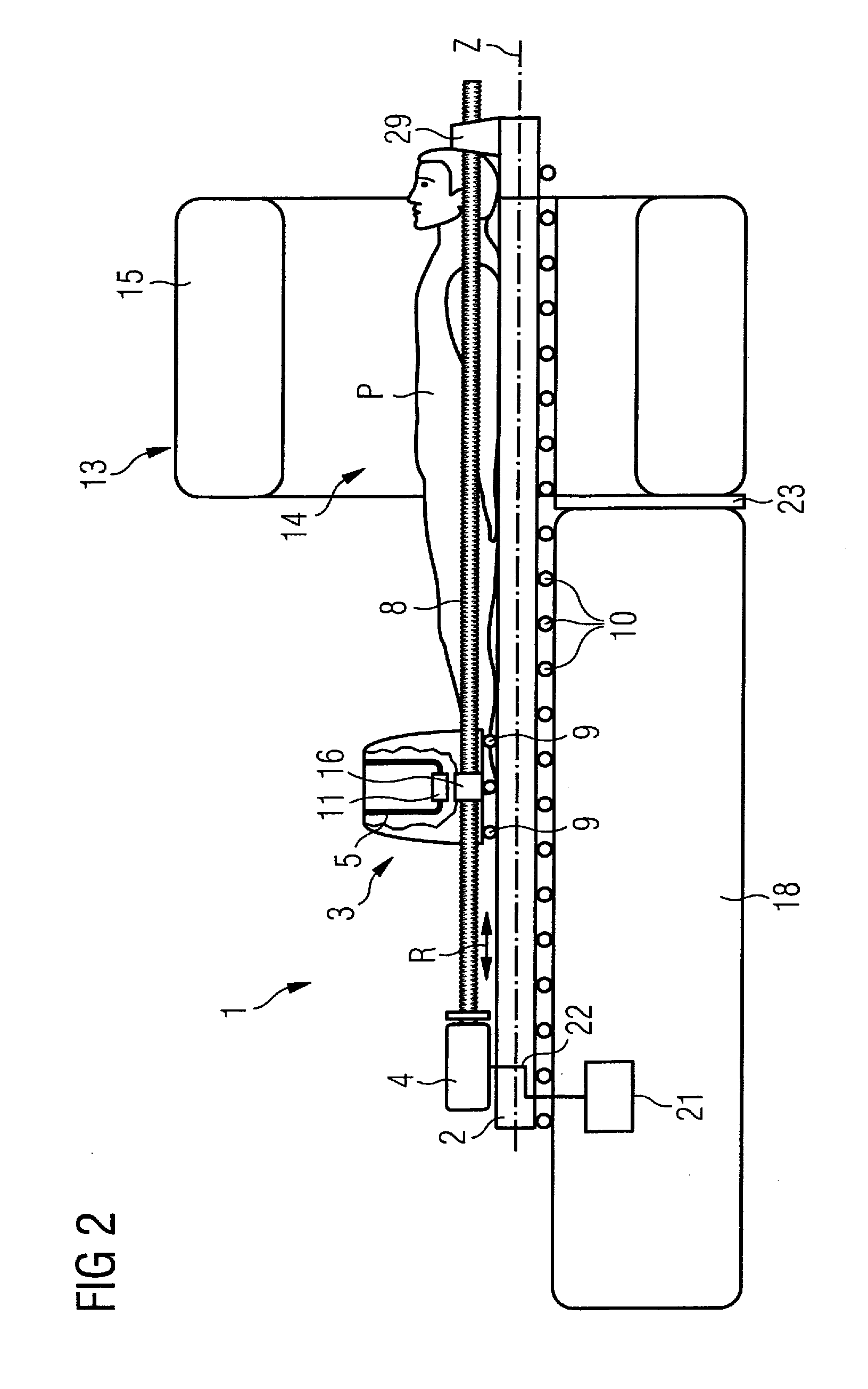Magnetic resonance examination platform with independently moveable bed and antenna device
a magnetic resonance examination and independent moving technology, applied in the field of examination platforms, can solve the problems of increasing the electrical losses in the patient's body, the limited use possibilities of individual surface antennas, and the inability of single surface antennas to generate effective images, so as to reduce distance and increase the signal-noise ratio of acquired magnetic resonance signals.
- Summary
- Abstract
- Description
- Claims
- Application Information
AI Technical Summary
Benefits of technology
Problems solved by technology
Method used
Image
Examples
Embodiment Construction
[0045]FIG. 1 shows a schematic side view of an embodiment of the examination platform 1 according to the invention, with a local antenna device 3 arranged above a patient bed 2 as well as a patient P and a magnetic resonance apparatus 13 in side view. The magnetic resonance apparatus 13 is coupled via an interface 23 with the examination platform 1 and has an acquisition space 14 that is surrounded by an annular or U-shaped (i.e. laterally open) tomography housing 15 in which are housed in a typical manner a whole-body radio-frequency coil, a basic field magnet, gradient coils, etc. For clarity, a further presentation of the technical details of a magnetic resonance apparatus 13 have not been included since these are known to those skilled in the art. The patient bed 2 can be moved along its longitudinal axis Z relative to a base 18 on rollers 10. The base 18 and the tomography housing 15 can also be fashioned as a combined housing. Other embodiments for a movable support of a patie...
PUM
 Login to View More
Login to View More Abstract
Description
Claims
Application Information
 Login to View More
Login to View More - R&D
- Intellectual Property
- Life Sciences
- Materials
- Tech Scout
- Unparalleled Data Quality
- Higher Quality Content
- 60% Fewer Hallucinations
Browse by: Latest US Patents, China's latest patents, Technical Efficacy Thesaurus, Application Domain, Technology Topic, Popular Technical Reports.
© 2025 PatSnap. All rights reserved.Legal|Privacy policy|Modern Slavery Act Transparency Statement|Sitemap|About US| Contact US: help@patsnap.com



